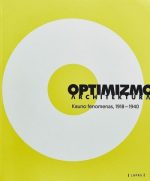
Rami Vilniaus senamiesčio gatvelė kadaise buvo viena gyvybingiausių „Juodojo kvartalo“ gatvių. Čia stovėjo Didžioji sinagoga ir Strašūno biblioteka, rezidavo Gaonas, veikė kloizai, šurmuliavo turgūs ir restoranai, glaudėsi daugybė krautuvėlių, gyveno, skurdo ir verslavo miesto žydai.
Šis kultūrinis pažintinis gidas po Žydų gatvę – tarsi surastas pradingęs archyvas. Jame nuosekliu pasakojimu, nuotraukomis, brėžiniais ir kita medžiaga atkuriamas XIX–XX a. gatvės vaizdas: išlikę ir neišlikę pastatai, gyventojų vardai, jų veiklos barai ir kasdienio gyvenimo detalės.
Knyga bus įdomi Vilniaus mylėtojams, žydų istorijos tyrinėtojams, esamiems ir buvusiems gatvės gyventojams, jų palikuonims, miesto gidams ir svečiams.
Aelita Ambrulevičiūtė – istorikė, Vilniaus universiteto vyresnioji mokslo darbuotoja, tyrinėja socioekonominę, kasdienybės, urbanizacijos istoriją. Pirmosios šios serijos knygos „Prabilę namai. XIX a. Vokiečių gatvės eskizai“ autorė.
Giedrė Polkaitė-Petkevičienė – istorikė, Vilniaus universiteto Istorijos fakulteto darbuotoja, nagrinėja XX a. pirmos pusės sociokultūrinę istoriją, populiariosios kultūros, urbanizacijos istoriją.
Gintė Konstantinavičiūtė – istorikė, mokslinė redaktorė. Domisi istorine sociologija, sovietologija, kasdienybės istorija, socialinių mokslų metodologija.
Šios knygos autorės susibūrė neatsitiktinai: visos tuo pat metu Vilniaus universitete studijavo istoriją, rinkosi panašius kursus, buvo patekusios į tą pačią profesinę aplinką, todėl lengvai įsitraukė į šios knygos rašymo komandinį darbą. Knygos turinys yra paremtas gausia archyvų medžiaga. Aelitai Ambrulevičiūtei ir Giedrei Polkaitei-Petkevičienei teko „posesijų“ dalies krūvis. Litvakų socialinės ir kultūrinės istorijos apžvalgą istoriografinių šaltinių pagrindu parengė Gintė Konstantinavičiūtė, o XIX–XX a. pradžios socialinės istorijos apžvalga – bendras trijų autorių darbas.
This quiet little street in the Old Town was once one of the liveliest streets of the “Black Quarter” of Vilnius. Here stood the Great Synagogue and the Strashun Library with the Vilna Gaon himself residing in the area; it was a place of the hustle and bustle of markets and restaurants shouldered by numerous little shops, and where Vilnius’s Jewish population lived, suffered from poverty and traded.
This culture guide to Žydų Street is like a longlost archive that has been re-discovered. Its chronological narrative and numerous photographs, sketches and other material create a fascinating panoramic account of the street in the 19th-20th century: its defunct and surviving buildings, names of residents, their professions and daily lives.
The book should be particularly useful to those interested in Vilnius’ Jewish history, past and present residents of the street, their offspring, city guides and visitors.
Aelita Ambrulevičiūtė is a historian and senior researcher at Vilnius University where she received her Ph.D. in 2010. Among her research interests are socio-economic history, everyday life studies and urbanisation. Her other publications include the first book in the series, Houses that Talk: Sketches of Vokiečių Street in the Nineteenth Century.
Giedrė Polkaitė-Petkevičienė is a historian and works at the Faculty of History at Vilnius University. Her research interests include socio-cultural history of the early 20th century, popular culture and urbanisation.
Gintė Konstantinavičiūtė is a historian and scientific editor. Her areas of interest are sociology, sovietology, history of everyday life and methodology of social sciences.
It is not by accident that the authors decided to collaborate on this book-project: all three studied history at a similar time, took similar courses, and worked in a similar professional environment. The detailed and informative chapters on possessions make up the main body of the book and are based on meticulous archival research, revised and selected by Aelita Ambrulevičiūtė and Giedrė Polkaitė- Petkevičienė. The review of the social and cultural history of the Litvaks, based on historiographical sources was prepared by Gintė Konstantinavičiūtė, whereas the historical survey of the 19th- and early 20th-century social history is the result of a shared scholarly endeavour of all three authors.





